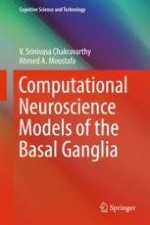2018 | OriginalPaper | Buchkapitel
8. Modeling Precision Grip Force in Controls and Parkinson’s Disease Patients
verfasst von : Ankur Gupta, V. Srinivasa Chakravarthy
Erschienen in: Computational Neuroscience Models of the Basal Ganglia
Verlag: Springer Singapore
Aktivieren Sie unsere intelligente Suche, um passende Fachinhalte oder Patente zu finden.
Wählen Sie Textabschnitte aus um mit Künstlicher Intelligenz passenden Patente zu finden. powered by
Markieren Sie Textabschnitte, um KI-gestützt weitere passende Inhalte zu finden. powered by
